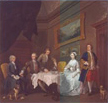I personally feel that we have seen a huge shift in the way the public interact with world around them because of the more interactive internet which has evolved over the past decade.
Just as people no longer just see the internet as a place to find information, I think that the public no longer expect didactic experiences from museums, they instead want cultural institutions to be platforms for exchange, places that accept that anyone can have a valid point of view.
One element is having a say what goes into museums, this could be by submitting work through an open call for entry, voting from a shortlist for what should appear in an exhibition or interacting with an exhibition in the gallery.
Though I believe strongly in the public being given a voice, personally I feel that the majority of an exhibition programme should still be curated in a traditional manner.
Museums have a many other ways to give their audiences a voice, one of those which I find particularly interesting is simply asking those in the gallery space how they feel about the art on display, and sharing this with others.
I have seen museums do this through comment cards pegged in the gallery, writing with chalk on the wall around the paintings, through text messages, video and through the web. By sharing their opinions on art with other visitors, you see a dialogue emerge, this creates a different starting point from which others can approach and appreciate an exhibition.
Often these starting points are not the same as those you would find in a curatorial description of a work of art, but they are just as valid and often make you look at art in new and unusual ways.








Pingback: Tate Debate: Should the public have a say in what goes into museums? | Tate Blog
An interesting piece. I frequently make a point of asking the attendants and staff in art galleries what they think of the work exhibited. I believe this to be a valid approach as these guys spend a much greater period of time in the presence of the works on show. Additionally, if you engage with the attendants you will find that they have either stories or information to share regarding the reaction from the public. Whilst the attendants may only be required to monitor ‘click-through’ of attendance you may well be privileged to discover just how long the average visitor takes looking at the pieces or indeed, reading the creative writing which necessarily accompanies many contemporary art works.
So all good stuff and a huge, potentially untapped data resource that it seems to me would work well in tandem with social-networking… Perhaps attendants could be tasked with documenting public comments, not only for important Curatorial response but for effective public transparency? However I’m guessing that this would not be so popular, not least because many establishments would risk being exposed and may well become victims of the pro-funding cuts lobby. Perish the thought that we should have culture for the masses
Pingback: Tweets that mention Jim Richardson: Should the public have a say in what goes into museums? . The Great British Art Debate -- Topsy.com